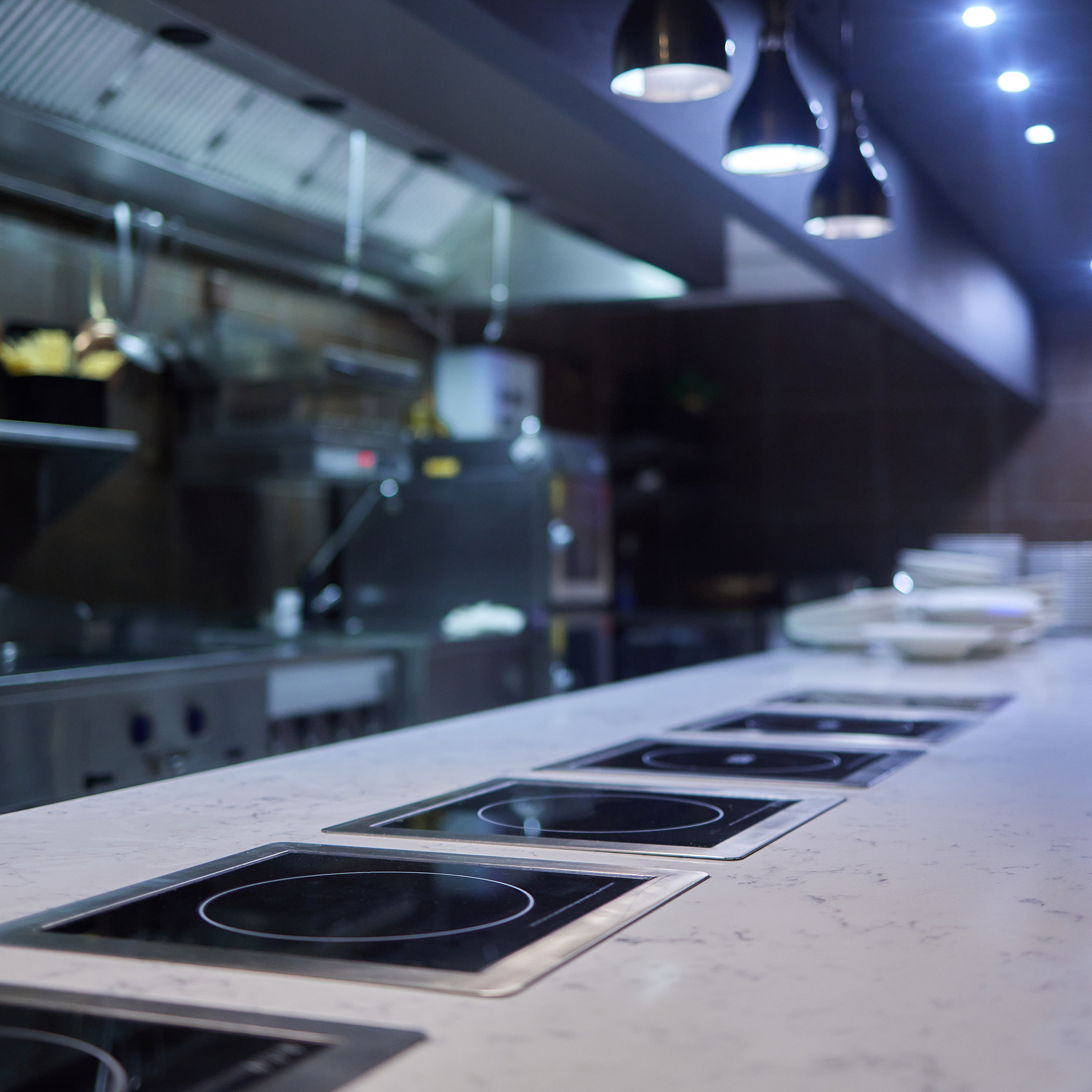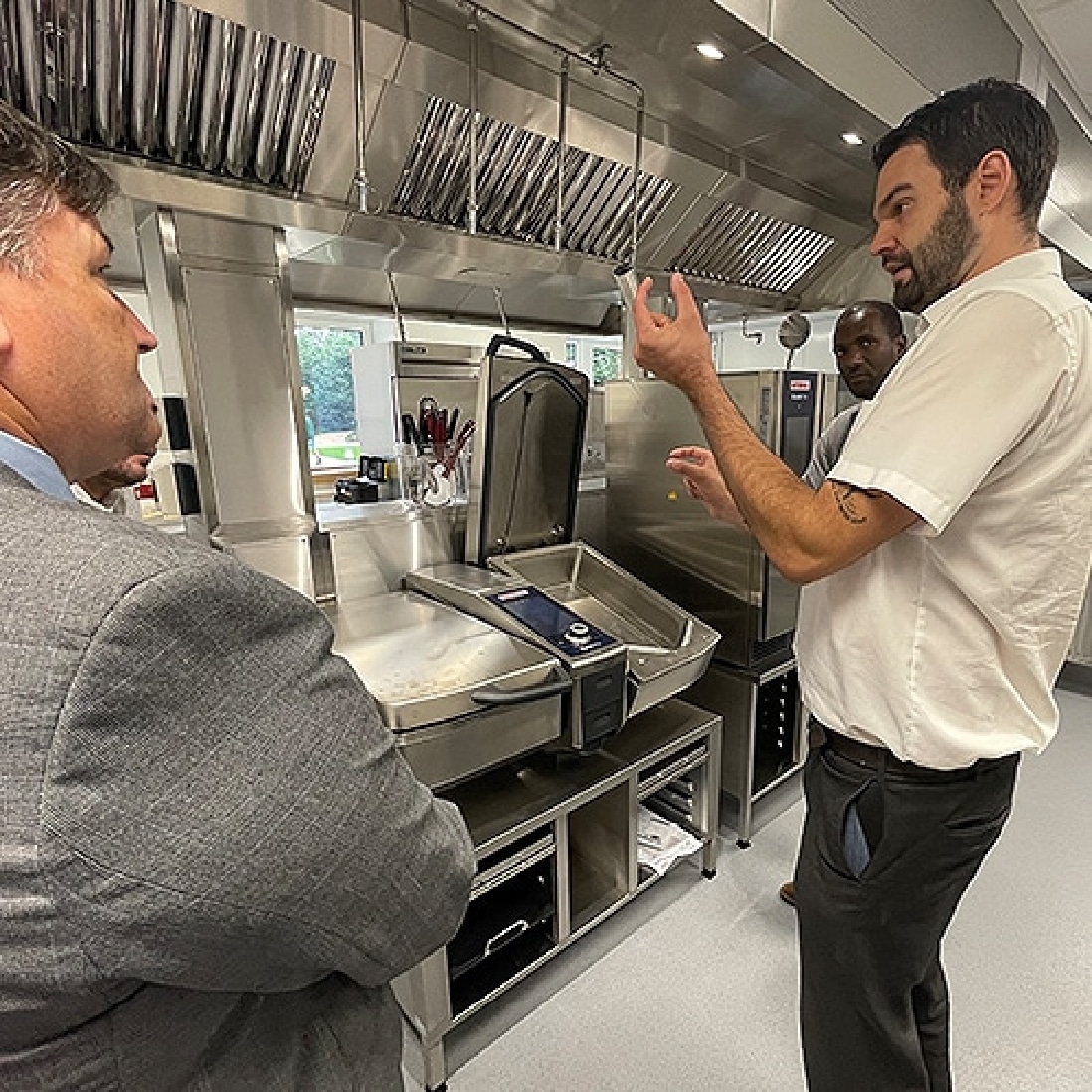Sustainable Commercial Kitchen Design: What You Need to Know

In today’s commercial kitchens, sustainability is more than just a buzzword—it’s a necessity. As environmental regulations tighten and customers become increasingly eco-conscious, businesses are looking for ways to reduce their carbon footprint and energy consumption. One of the most impactful ways to achieve this is through a thoughtful, sustainable commercial kitchen design.
At INOX, we’re committed to helping clients build commercial kitchens that are not only functional and efficient but also environmentally responsible. In this blog, we explore the key principles of sustainable commercial kitchen design and how you can create a kitchen that supports both your business goals and the planet.
Why Sustainable Commercial Kitchen Design Matters
Commercial kitchens consume large amounts of energy and water, generating significant waste in the process. From cooking equipment to ventilation systems, each element of a kitchen impacts the environment. A well-designed, sustainable kitchen not only reduces your environmental impact but also brings tangible business benefits:
- Lower energy and water bills
- Enhanced reputation with eco-conscious clients and stakeholders
- Compliance with environmental regulations and certifications
- Improved working conditions and staff wellbeing
Investing in sustainability isn’t just good for the planet—it’s smart business.

Key Elements of Sustainable Commercial Kitchen Design
When planning a sustainable commercial kitchen design, it’s essential to consider every aspect, from equipment selection to layout and operational processes. Here are some crucial components:
1. Energy-Efficient Appliances
Choosing the right equipment can dramatically reduce energy consumption. Look for appliances with high energy efficiency ratings and certifications, such as those bearing the Energy Star label.
- Induction cooktops use less energy and produce less heat, making for a more comfortable workspace.
- Combi ovens offer flexibility and efficiency by combining multiple cooking modes.
- Smart refrigeration units reduce energy waste with precise temperature control and automated defrost cycles.
2. Water Conservation Measures
Water is a precious resource, and commercial kitchens can be heavy users. Incorporating water-saving features can significantly cut consumption.
- Low-flow pre-rinse spray valves and sensor-activated taps reduce unnecessary water use.
- Efficient dishwashers use less water while maintaining high sanitation standards.
- Consider greywater recycling systems to reuse water from sinks for non-potable purposes.
3. Sustainable Materials and Construction
Opting for environmentally friendly building materials supports a circular economy and reduces embodied carbon.
- Recycled stainless steel is durable, hygienic, and has a lower environmental impact.
- Non-toxic finishes and low-VOC paints contribute to better indoor air quality.
- Modular designs allow for easy reconfiguration and future expansion, reducing waste over time.
4. Smart Ventilation and Lighting
A sustainable kitchen isn’t just about the equipment—it’s also about creating a comfortable, efficient environment.
- Demand-controlled ventilation systems adjust airflow based on kitchen activity, reducing energy waste.
- LED lighting uses a fraction of the energy of traditional bulbs and lasts much longer.
- Daylight integration can reduce reliance on artificial lighting during daytime hours.
Waste Reduction and Recycling
Sustainable commercial kitchen design goes beyond construction—it’s also about daily operations.
- Dedicated recycling stations make it easy for staff to separate waste.
- Food waste reduction strategies such as portion control and composting, minimise landfill contributions.
- Reusable or recyclable packaging for ingredients and supplies supports wider sustainability goals.
Future-Proofing Your Kitchen
Sustainability is an ongoing process. By incorporating flexibility and future-ready technologies into your commercial kitchen design, you ensure that your investment remains efficient and compliant with evolving standards.
- Choose modular equipment that can be upgraded or reconfigured as needs change.
- Implement monitoring systems to track energy and water usage and identify areas for improvement.
- Stay informed about new technologies and regulatory updates to keep your kitchen at the forefront of sustainability.
Why Partner with INOX for Sustainable Commercial Kitchen Design?
At INOX, sustainability and efficiency are closely intertwined. Our team has extensive experience in designing and installing commercial kitchens that meet the highest environmental and operational standards. Whether you’re building a new facility or upgrading an existing one, we’ll work closely with you to create a sustainable kitchen that supports your business and reduces your environmental impact.
From concept to completion, we’ll guide you through every step of the process, ensuring your kitchen is designed for performance, longevity, and sustainability.


Ready to Make the Shift?
If you’re considering a sustainable commercial kitchen design for your business, get in touch with INOX today. Our expert team will help you plan and implement a solution that’s tailored to your needs, delivering not only a greener kitchen but also long-term cost savings and operational benefits.

Share This: